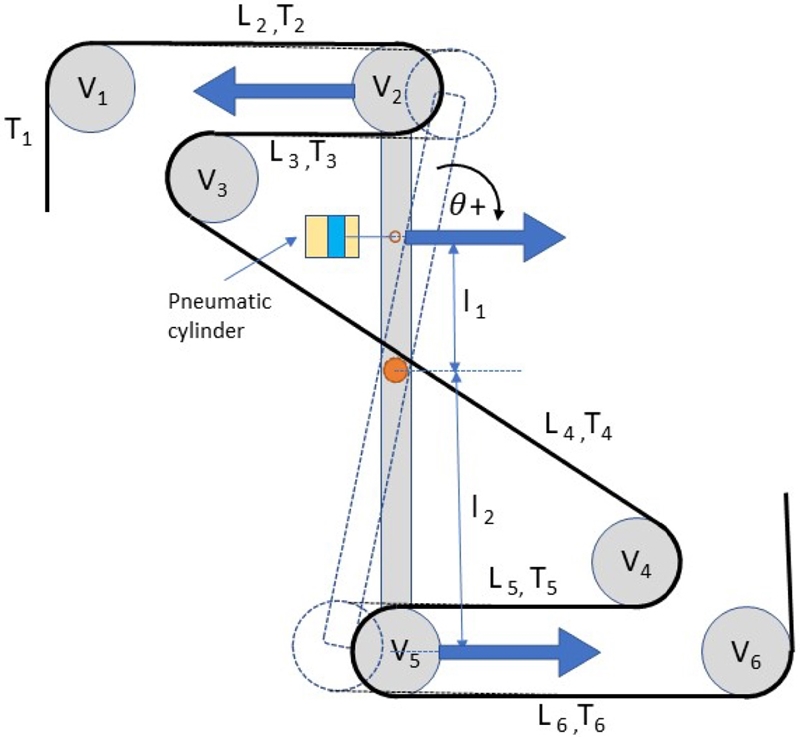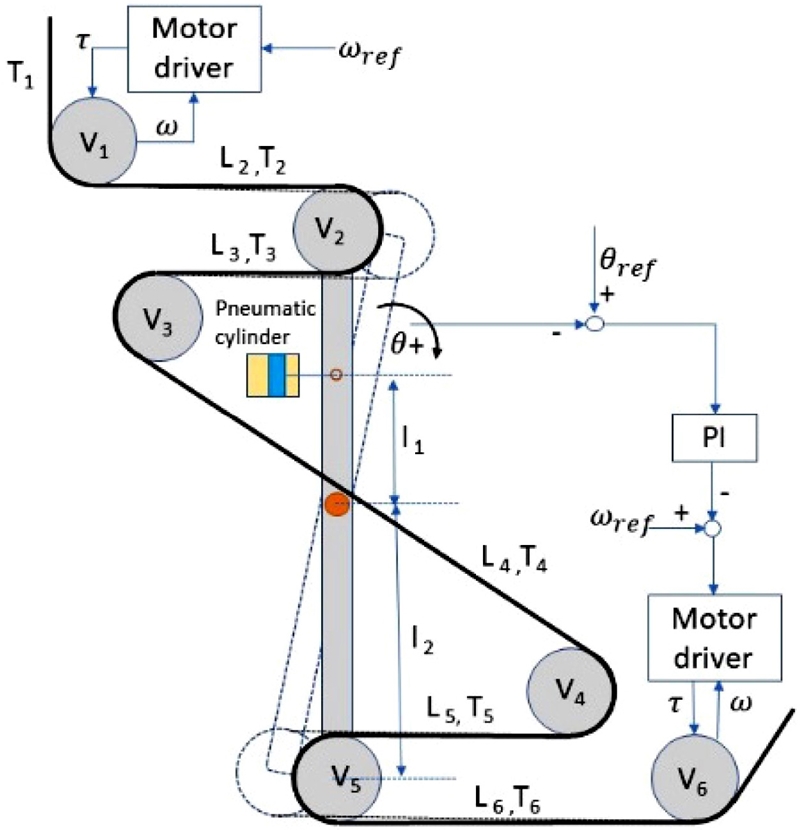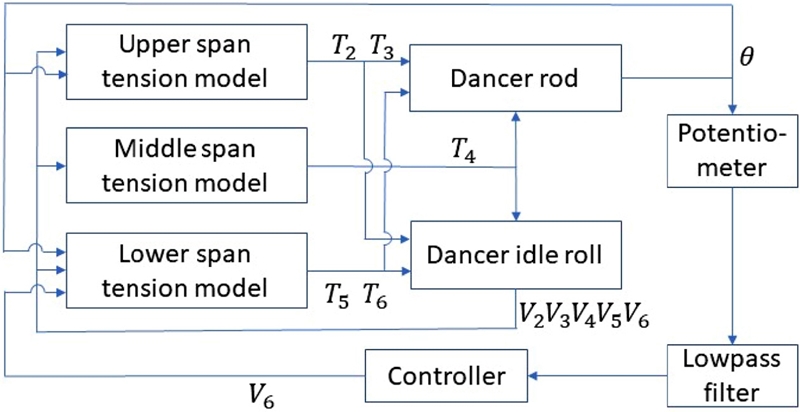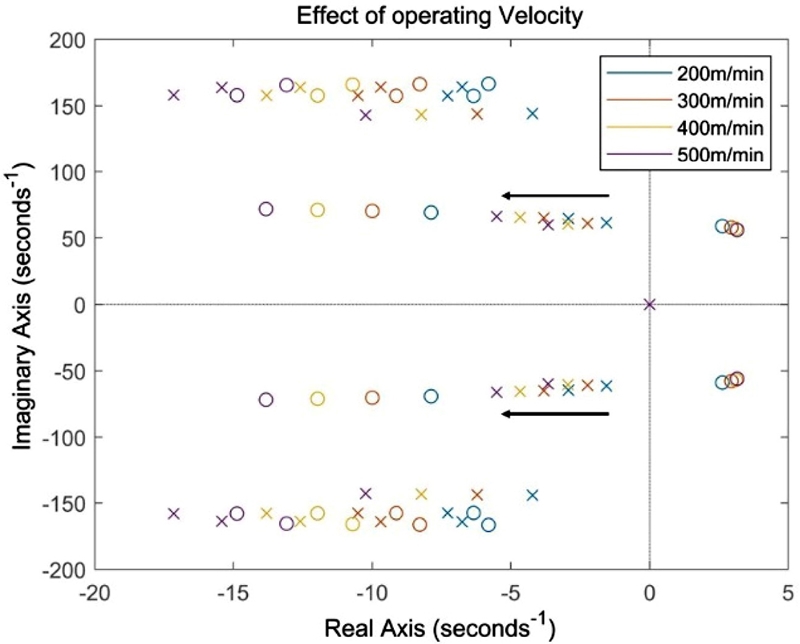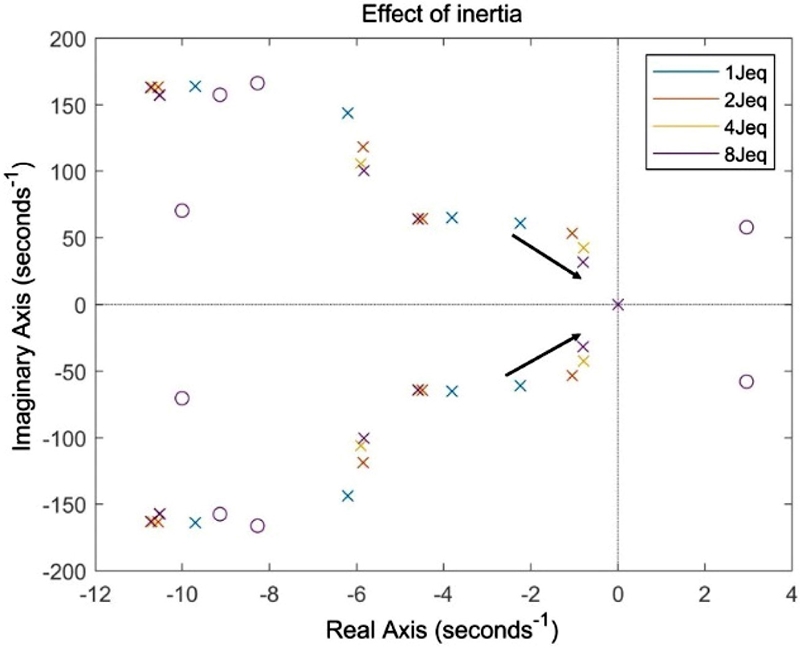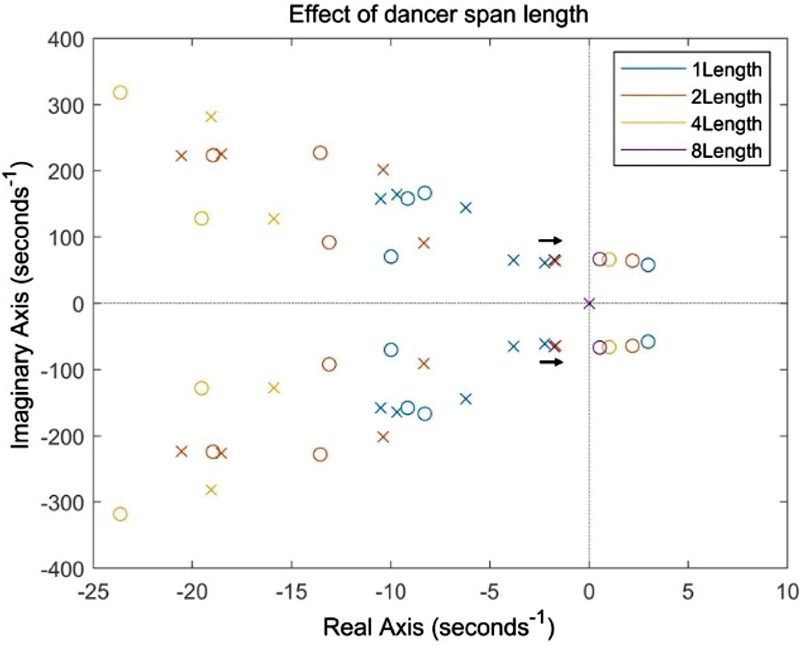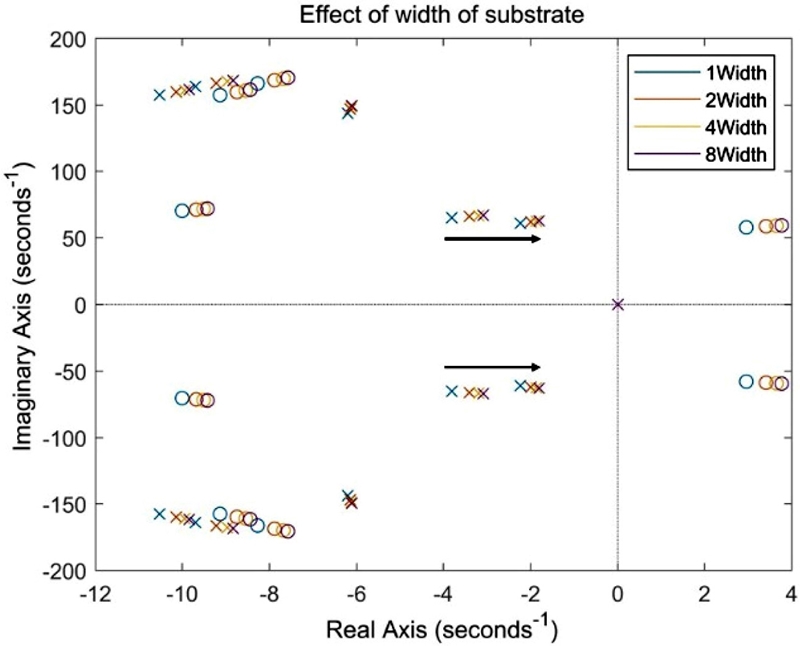
자중 보상롤을 포함한 센터 회전형 덴서의 동특성 해석


Copyright © The Korean Society for Precision Engineering
This is an Open-Access article distributed under the terms of the Creative Commons Attribution Non-Commercial License (http://creativecommons.org/licenses/by-nc/3.0) which permits unrestricted non-commercial use, distribution, and reproduction in any medium, provided the original work is properly cited.
Abstract
Recently, there has been increasing demand for flexible electronic applications such as flexible displays, foldable smartphones, and flexible batteries based on flexible substrates. The roll-to-roll additive process has attracted tremendous attention regarding manufacturing such flexible electric devices because of its characteristics of eco-friendliness, large area of compatibility, and high flexibility, in contrast to traditional lithography or vaper evaporation methods. The mass production of roll-to-roll process tension control in precision is the most crucial assignment to be achieved. For the tension control, the load cell and dancer systems are used to regulate tension disturbance. A pendulum dancer system was extensively applied for unwinder or rewinder whose span length varied in the roll-to-roll printing and coating process. However, there have been an inadequate number of studies regarding tension control using the dancer system for mass production. In this paper, we propose a mathematical model of center pivot rotary dancer system revolving dual idle rolls around the pivot. Parametric studies are conducted as a function of inertia, span length, width of substrate, and operation velocity. Additionally, an impulse response was conducted for the time domain analysis. These results can be used for the mass production of roll-to-roll additive process.
Keywords:
Dancer, Dynamic, Roll-to-roll, Self weight compensation, Tension control키워드:
덴서, 동특성, 롤투롤, 자중 보상, 장력 제어1. 서론
최근 플렉서블 디스플레이, 폴더블 스마트폰, 전기자동차용 배터리, 웨어러블 센서 등 유연기판 소재를 기반으로 이용한 어플리케이션에 대한 수요가 높아지고 있다. 유연한 기판 위에 전자소자를 대량 생산하기 위한 여러 방법 중 연속된 롤을 통과하는 유연기판 위에 인쇄 및 코팅을 통해 전자소자를 제작하는 롤투롤 인쇄전자 기술은 플렉서블 디바이스의 제작을 위한 주목받는 기술 중 하나이다.1-7
롤투롤 공정을 통한 플렉서블 디바이스의 제작을 위해서 정밀한 장력 제어는 필수적인 요소이다. 유연기판에 발생하는 장력 외란은 소재의 인장 혹은 수축의 변형률 변화를 발생시키며, 이는 기판 위에서 제작되는 전자 소자의 인장력, 압축력 혹은 다층 소자의 경우 위치 외란을 발생시키게 되어 최종 생산품의 기능 저하 혹은 기능 불량의 원인이 될 수 있다.8-13
롤투롤 공정의 장력 제어를 위해서 로드셀과 덴서 시스템이 사용되고 있다.14 이 중, 덴서는 능동형(Active)과 수동형(Passive)으로 분류된다.15 능동형 방식은 넓은 범위의 장력 외란을 제어할 수 있으나, 제어를 위한 액츄에이터(Actuator)의 성능 한계로 인하여 고주파수의 장력 외란에 대한 보상 능력의 한계가 존재한다. 두 번째로 수동형 덴서는 외부 액츄에이터를 사용하지 않고 아이들 롤(Idle Roll) 및 스프링(Spring), 댐퍼(Damper)로 구성되어 덴서의 공진 주파수에 따라 보상 가능한 장력 외란의 주파수 대역이 결정된다.16 그러나 수동형 방식의 덴서는 현장 적용의 한계가 있는데, 이는 덴서의 움직임에 의해서만 장력 외란의 보상이 수행되기 때문에 일정 크기 이상의 장력 외란이 발생할 경우, 덴서 롤의 물리적 이동 한계에 도달할 경우 제어기 성능이 낮아지게 된다.17-19
기존의 연구에서 덴서의 구조는 외팔보 방식의 단일 아이들 롤을 힌지점(Hinge Point) 중심으로 회전시키는 형태이며, 이는 덴서 아이들 롤의 회전 각도에 따라 자중으로 인한 토크가 발생되는 원인이 된다.17 이러한 자중 효과를 상쇄하기 위해서 힌지점 기준으로 양단에 아이들 롤을 설치하여 자중에 의한 모멘트를 보상할 수 있는 센터 피봇 로터리 덴서(Center Pivot Rotary Dancer)를 통해 장력을 제어할 수 있으나, 현재까지 이에 대한 충분한 연구는 수행되지 않은 상태이다. 이에 본 논문에서는 자중에 의한 모멘트를 상쇄할 수 있는 센터 피봇 로터리 덴서에 대한 동특성을 분석하였다. 센터 피봇 로터리 덴서는 언와인더, 리와인더와 같이 스팬의 길이 변화가 발생하는 구간에서 이를 보상할 수 있는 특징을 갖고 있으며, 어큐물레이터(Accumulator)를 설치하기에 공간상 제약이 있거나 소재 길이 변화가 상대적으로 크지 않을 경우에도 활용할 수 있다.
2. 센터 피봇 로터리 덴서의 수학적 모델링
2.1 장력 모델링
센터 피봇 로터리 덴서 시스템은 Fig. 1과 같이 회전 중심인 힌지점과 양단 덴서 로드에 장착된 2개의 이동형 아이들 롤로 구성된다. 유연기판은 총 5개의 스팬을 통과하게 되는데, 각 스팬의 장력은 질량 보존의 법칙을 통해 유도할 수 있다.16
다음 Fig. 1에서 V1과 V2로 구성되는 스팬의 입측 질량 변화율과 출측 질량 변화율은 다음의 식(1)과 같다. 또한 스팬 내의 질량 변화율은 식(2)와 같이 계산할 수 있다. 이때, 스팬 길이와 각도의 관계(L2(t) = L20 + l2θ(t)) 및 장력과 변형율의 관계(t2(t) = AEε2(t)) 그리고 식(3)을 식(1)과 식(2)에 대입 정리하고, 선형섭동법을 통해 선형 장력 모델인 식(4)를 얻는다. 마찬가지 방법으로 나머지 스팬의 장력을 구하면 식(5)에서 식(8)과 같이 정리할 수 있다. 이때, 식(6)의 장력 T4(t)은 각도 변화량 이 없는데, 이는 덴서 로드의 회전과 무관하게 고정된 위치의 입출측 아이들 롤로 구성되는 스팬이기 때문이다.
| (1) |
| (2) |
| (3) |
| (4) |
| (5) |
| (6) |
| (7) |
| (8) |
2.2 아이들 롤 및 덴서의 회전 속도 모델링
센터 피봇 로터리 덴서를 구성하는 아이들 롤은 롤 표면을 지나가는 유연기판의 구동력에 의해 회전 운동을 하게 된다. 이때, 기판과 롤 표면 사이에 미끄러짐 운동은 없다는 가정 하에 롤의 회전 속도가 계산된다. 만약 미끄러짐이 존재할 경우는, 운전 장력에 비하여 고속으로 소재가 이동하기 때문이다. 이는 유연기판과 롤러 표면 간에 발생하는 공기층 두께 모델을 고려하여 속도를 계산하여야 한다.19
아이들 롤의 회전 중심에 대한 토크 방정식은 식(9)와 같이 전방 장력과 후방 장력의 차이 및 베어링 마찰, 아이들 롤의 관성에 의해 결정된다. 이를 평형점 근처에서 운전 장력과 운전 속도로 선형화하여 접선속도에 대해 정리하면 식(10)을 얻는다.17
| (9) |
| (10) |
센터 피봇 로터리 덴서의 힌지점에 대한 회전 속도를 계산하기 위하여 식(11)의 토크방정식을 이용한다. 힌지점 기준으로 작용하는 힘은 덴서 로드의 상하부 아이들 롤에 작용하는 장력과 공압 실린더에 의한 압력 및 스프링력이다. 공압 실린더는 식(12)와 같은 스프링력을 발생한다고 가정하였다. 식(12)를 식(11)에 대입한 후, 작동점 근처에서 선형화하면 덴서 로드의 회전 운동 방정식을 식(13)과 같이 얻는다. 이때, 자중에 의한 힘은 상하부 아이들 롤에서 각각 λ2mgsinθ(t)로 발생하지만 반대 방향으로 동작하여 상호 간에 상쇄되었다.
| (11) |
| (12) |
| (13) |
3. 센터 피봇 로터리 덴서의 동특성 분석
3.1 덴서의 블록선도 구성
센터 피봇 로터리 덴서에 대한 신호 흐름 선도는 Fig. 2와 같이 도시할 수 있다. V1과 V6는 구동롤로서 운전 속도에 따라 회전하게 된다. 덴서 로드의 회전 각도는 포텐시오미터(Potentiometer)를 통해 측정되어 PI (Proportional-Integral) 제어기로 입력된다. PI 제어기 출력은 V6 모터드라이버로 입력된다. 결국, 덴서 로드가 일정한 각도 값을 갖도록 V6의 회전 속도를 제어하게 된다. 이를 블록선도를 나타내면 Fig. 3과 같다.
3.2 덴서의 동특성 분석
센터 피봇 로터리 덴서에 대한 동특성 분석을 위해 Fig. 3의 블록선도를 MATLAB SIMULINK (Version 9.2, R2018b, MathWorks®)를 사용하여 구현하고, 덴서 시스템의 입력(V6)과 출력(θ)의 상관관계를 극점-영점 그래프를 통해 조사하였다.
사용된 파라메터는 Table 1과 같다. 구동 조건 및 설계 변수의 영향을 운전 속도, 관성, 스팬 거리, 기판의 폭 방향 길이 변화에 대한 극점-영점 그래프를 Fig. 4에서 Fig. 7에 도시하였다.
Fig. 4에서 기판의 이동속도가 200에서 500 m/min으로 증가함에 따라 지배 극점(Dominant Pole)은 화살표와 같이 극좌표상의 왼쪽으로 평행이동을 하게 된다. 이는 운전 속도 증가에 의해 덴서 롤의 외란 수렴 속도가 빨라지며 진동(Oscillation)은 유사하게 발생함을 의미한다.
Fig. 5에서 센터 피봇 로터리 덴서의 관성이 기준 대비 2-8배까지 증가할 때의 지배 극점이 극좌표상의 오른쪽으로 이동하며 실수축에 더 가까이 움직임을 알 수 있다. 이는 덴서의 관성이 증가함에 따라 외란 수렴 속도가 느려지며, 진동은 줄어드는 효과를 의미한다.
Fig. 6에서 덴서의 스팬 길이가 증가함에 따른 극점의 변화를 파악 할 수 있다. 스팬 길이가 기준 대비 2-8배로 증가함에 따라 지배 극점은 극좌표상의 오른쪽으로 평행이동을 하게 된다. 이는 스팬 길이 증가로 인해 덴서의 외란 수렴 속도가 느려짐을 의미한다.
Fig. 7에서 사용하는 기판의 폭 방향 길이가 기준 대비 2-8배 증가함에 따른 극점의 변화를 확인할 수 있다. 지배 극점은 폭 방향 길이가 증가함에 따라 극좌표상의 오른쪽으로 이동하게 되며 이는 사용하는 소재의 폭 방향 길이가 증가함에 따라 덴서의 외란 수렴 속도가 느려짐을 나타낸다.
3.3 센터 피봇 로터리 덴서와 단일롤 덴서의 동특성 비교
단일롤 덴서와 센터 피봇 로터리 덴서의 응답 성능을 비교하기 위하여 시간응답 및 극점-영점 지도를 Fig. 8에 도시하였다. 이때, 단일롤 덴서는 Ref. 11의 모델을 불러와 사용하였으며 모든 운전 조건 및 덴서 파라메터는 Table 1과 동일하게 설정하였다. 차이점은 덴서롤의 관성과 기판의 패스(Path) 차이에 따른 스팬 거리이다.
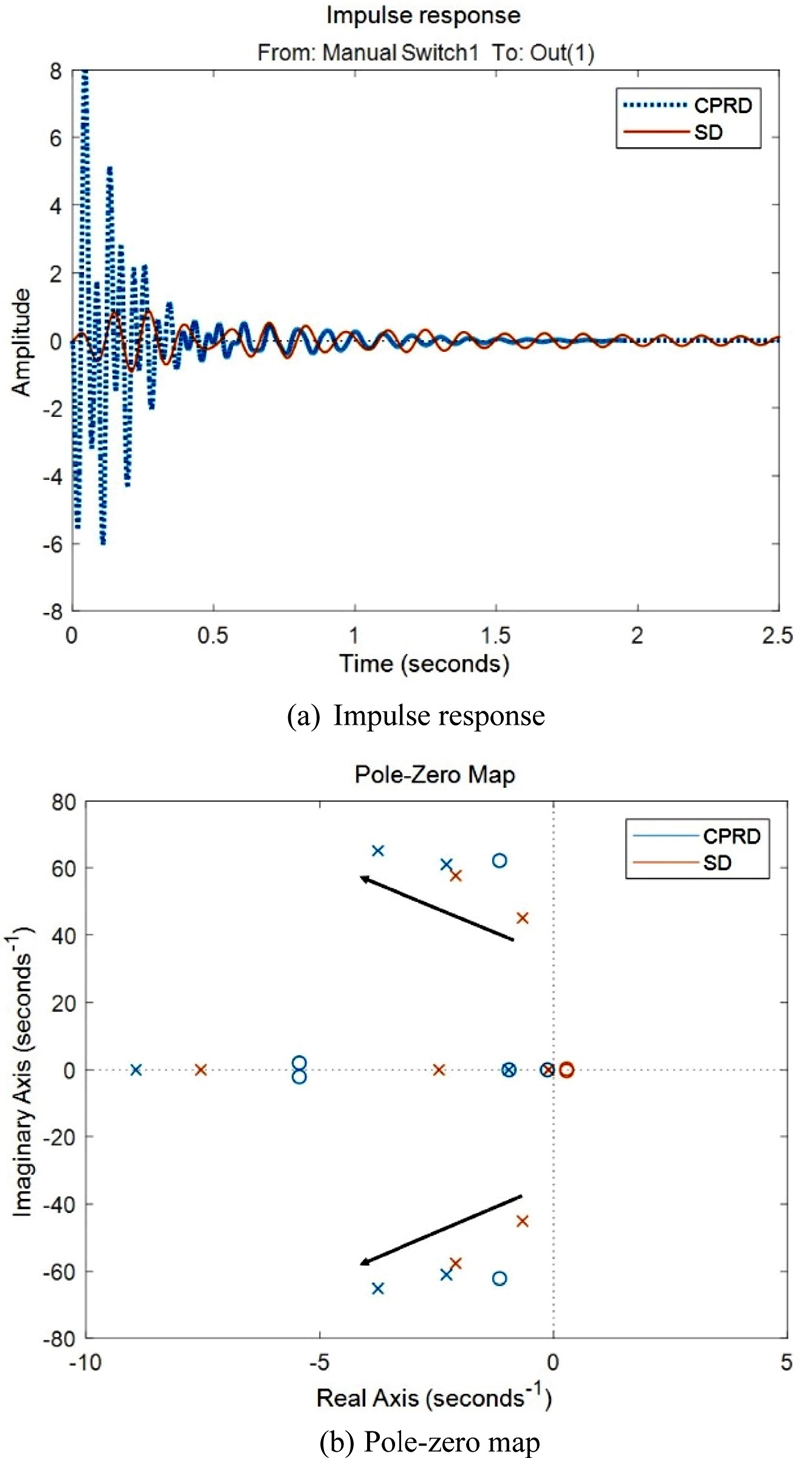
Comparison of center pivot rotary dancer and single roll dancer (CPRD: Center pivot rotary dancer, SD: Single roll dancer)
Fig. 8(a)는 Impulse 입력에 대한 정상 상태까지의 수렴 특성을 나타낸다. 초기 0.5초 이내에서 센터 피봇 로터리 덴서가 단일 롤 덴서에 비해 장력 외란이 크지만 정상 상태 수렴 속도는 더 빠름을 알 수 있다. 이는 Fig. 8(b)의 극점-영점 지도에서 센서 피봇 로터리 덴서의 지배 극점이 단일롤 덴서에 비해 허수축 및 실수축 모두에서 멀기 때문에 더 빠른 수렴 속도 및 더 큰 진동을 발생시키기 때문이다.
4. 결론
센터 피봇 로터리 덴서에 대한 수학적 모델링을 제시하고 이에 대한 동특성 분석을 수행하였다. 유연 전자소자의 롤투롤 인쇄 및 코팅을 구현할 경우 발생할 수 있는 운전 속도 증가, 유연기판의 폭 방향 길이 증가, 덴서의 관성 증가 및 스팬의 길이 변화에 대해서 극점-영점의 경향 분석을 통해 동특성 해석을 수행하였다.
이는 플렉서블 디스플레이, 폴더블 스마트폰, 전기 자동차용 배터리, 웨어러블 센서 등 유연기판 소재 기반 롤투롤 대량 생산을 위한 장력 제어의 기초 기술로서 활용될 것이다. 또한, 산업용 롤투롤 양산 시스템에서 센터 피봇 로터리 덴서를 적용한 장력 제어 시스템의 구현 및 제어기 설계를 위한 기술로서 활용될 것이다.
NOMENCLATURE
| m : | Mass |
| ρ : | Density |
| A : | Cross sectional area |
| E : | Young’s modulus |
| ε : | Strain |
| v(t) : | Tangential velocity |
| V(t) : | Variation of tangential velocity |
| t(t) : | Tension |
| T(t) : | Variation of tension |
| r : | Radius |
| θ : | Angle |
| l : | Length of dancer rod |
| Fk : | Spring force |
| b : | Bearing friction |
| li0 : | Initial span length at i-th span |
| τ : | Torque |
| ω : | Angular velocity |
| h : | Thickness |
| vop : | op |
| Jeq : | Equivalent moment of inertia |
| SD : | Single roll dancer |
| CPRD : | Center pivot rotary dancer |
Acknowledgments
이 논문은 2019년도 건국대학교 KU학술연구비 지원에 의한 논문임.
References
-
Zhang, Z., Wang, B., Qiu, J., and Wang, S., “Roll-to-Roll Printing of Spatial Wearable Thermoelectrics,” Manufacturing Letters, Vol. 21, pp. 28-34, 2019.
[https://doi.org/10.1016/j.mfglet.2019.07.002]

-
Chang, N. L., Ho-Baillie, A. W. Y., Vak, D., Gao, M., Green, M. A., et al., “Manufacturing Cost and Market Potential Analysis of Demonstrated Roll-to-Roll Perovskite Photovoltaic Cell Processes,” Solar Energy Materials and Solar Cells, Vol. 174, pp. 314-324, 2018.
[https://doi.org/10.1016/j.solmat.2017.08.038]

-
Yoon, S. J., Zhai, L., Kim, H. C., Kim, J. W., Muthoka, R. M., et al., “Rheology Design and Experimental Test of Roll-to-Roll Process for Electroactive Cellulose Film,” International Journal of Precision Engineering and Manufacturing, Vol. 19, No. 9, pp. 1377-1384, 2018.
[https://doi.org/10.1007/s12541-018-0162-4]

-
Yang, Y. J., Kim, H. C., Sajid, M., Wan Kim, S., Aziz, S., et al., “Drop-on-Demand Electrohydrodynamic Printing of High Resolution Conductive Micro Patterns for MEMS Repairing,” International Journal of Precision Engineering and Manufacturing, Vol. 19, No. 6, pp. 811-819, 2018.
[https://doi.org/10.1007/s12541-018-0097-9]

-
Lee, J., Shin, K. H., and Kang, H., “Design of a Register Controller Considering Inherent Characteristics of a Roll-to-Roll Continuous Manufacturing System,” The International Journal of Advanced Manufacturing Technology, Vol. 102, Nos. 9-12, pp. 3725-3737, 2019.
[https://doi.org/10.1007/s00170-019-03428-4]

-
Park, J., Lee, J., Sung, K. H., Shin, K. H., and Kang, H., “Quantitative Analysis of Peel-Off Degree for Printed Electronics,” Japanese Journal of Applied Physics, Vol. 57, No. 2, Paper No. 020304, 2017.
[https://doi.org/10.7567/JJAP.57.020304]

-
Sung, K. H., Park, J., and Kang, H., “Multi-Layer Inkjet Printing of Ag Nanoparticle Inks and its Sintering with a Near-Infrared System,” International Journal of Precision Engineering and Manufacturing, Vol. 19, No. 2, pp. 303-307, 2018.
[https://doi.org/10.1007/s12541-018-0037-8]

-
Kang, H. and Lee, C., “Effect of Tension on Conductivity of Gravure Printed Ag Layer in Roll-to-Roll Process,” International Journal of Precision Engineering and Manufacturing, Vol. 16, No. 1, pp. 99-104, 2015.
[https://doi.org/10.1007/s12541-015-0012-6]

-
Lee, C., Kang, H., Kim, C., and Shin, K., “A Novel Method to Guarantee the Specified Thickness and Surface Roughness of the Roll-to-Roll Printed Patterns Using the Tension of a Moving Substrate,” Journal of Microelectromechanical Systems, Vol. 19, No. 5, pp. 1243-1253, 2010.
[https://doi.org/10.1109/JMEMS.2010.2067194]

-
Kim, C., Jeon, S. W., and Kim, C. H., “Reduction of Linearly Varying Term of Register Errors Using a Dancer System in Roll-to-Roll Printing Equipment for Printed Electronics,” International Journal of Precision Engineering and Manufacturing, Vol. 20, No. 9, pp. 1485-1493, 2019.
[https://doi.org/10.1007/s12541-019-00157-2]

-
Park, J., Kang, H. J., Gil, H., Shin, K. H., and Kang, H., “Roll-to-Roll Infrared and Hot-Air Sintering of Gravure-Printed Ag Layer based on In Situ Tension Measuring and Analysis,” Journal of Materials Chemistry C, Vol. 4, No. 38, pp. 8884-8888, 2016.
[https://doi.org/10.1039/C6TC02464E]

-
Kang, H. and Baumann, R. R., “Mathematical Modeling and Simulations for Machine Directional Register in Hybrid Roll-to-Roll Printing Systems,” International Journal of Precision Engineering and Manufacturing, Vol. 15, No. 10, pp. 2109-2116, 2014.
[https://doi.org/10.1007/s12541-014-0570-z]

-
Ball, A. K., Roy, S. S., Kisku, D. R., and Murmu, N. C., “A New Approach to Quantify the Uniformity Grade of the Electrohydrodynamic Inkjet Printed Features and Optimization of Process Parameters Using Nature-Inspired Algorithms,” International Journal of Precision Engineering and Manufacturing, Vol. 21, No. 3, pp. 387-402, 2020.
[https://doi.org/10.1007/s12541-019-00213-x]

- Carlson, D., “Considerations in the Selection of a Dancer or Load Cell Based Tension Regulation Strategy,” Proc. of the 6th International Conference on Web Handling, pp. 243-262, 2001.
-
Dwivedula, R. V., Zhu, Y., and Pagilla, P. R., “Characteristics of Active and Passive Dancers: A Comparative Study,” Control Engineering Practice, Vol. 14, No. 4, pp. 409-423, 2006.
[https://doi.org/10.1016/j.conengprac.2005.02.003]

- Shin, K. H., “Tension Control,” Tappi Press, 2000.
-
Kang, H. K., Lee, C. W., Shin, K. H., and Kim, S. C., “Modeling and Matching Design of a Tension Controller Using Pendulum Dancer in Roll-to-Roll Systems,” IEEE Transactions on Industry Applications, Vol. 47, No. 4, pp. 1558-1566, 2011.
[https://doi.org/10.1109/TIA.2011.2156376]

-
Kang, H. and Shin, K. H., “Precise Tension Control of a Dancer with a Reduced-Order Observer for Roll-to-Roll Manufacturing Systems,” Mechanism and Machine Theory, Vol. 122, pp. 75-85, 2018.
[https://doi.org/10.1016/j.mechmachtheory.2017.12.012]

-
Shin, K. H. and Kwon, S. O., “The Effect of Tension on the Lateral Dynamics and Control of a Moving Web,” IEEE Transactions on Industry Applications, Vol. 43, No. 2, pp. 403-411, 2007.
[https://doi.org/10.1109/TIA.2006.889742]


Assistant professor in the Department of Mechatronics and Electronic Engineering, Konkuk University Glocal campus. His research interest is web handling, tension and register control, photonic sintering, biomechanics, and eye movement.
E-mail: hyunkyoo@kku.ac.kr
